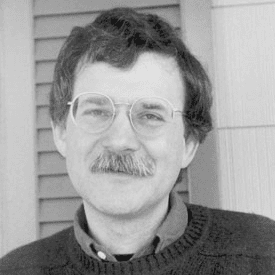The Roy Rosenzweig Prize for Creativity in Digital History is sponsored jointly by the AHA and the Roy Rosenzweig Center for History and New Media (RRCHNM) at George Mason University (GMU). It was developed by friends and colleagues of Roy Rosenzweig (1950–2007), the Mark and Barbara Fried Professor of History and New Media at GMU, to honor his life and work as a pioneer in the field of digital history.
This prize is awarded annually to honor and support work on a creative and freely available new media project, and in particular for work that reflects thoughtful, critical, and rigorous engagement with technology and the practice of history. The current prize amount is $4,000, funded by donations to GMU’s AHA/RRCHNM Rosenzweig Prize Fund (see below).
Eligibility
The prize will be conferred on a project that has been launched in the last two years and is publicly available. The prize recipient(s) will be expected to apply awarded funds toward the advancement of the project goals. Projects may be renominated, as long as a description is included about any updates since the original nomination.
Application Process
Log into your MY AHA account at historians.org/myaha and click “Available Application Forms” in the AHA Awards, Grants, and Jobs section. If you don’t have an account, create one for free at historians.org/createaccount. If nominating someone else, select the Nominate button and search for the nominee’s existing record or create a new record. (For a group project, select one person to be the main nominee and include other names later.)
- Fill in the application form, which includes the nominee’s contact information, the project name, and the names of additional nominees (if group nomination).
- Upload an Application Packet as a single PDF. Include the following document:
- Nomination letter (up to 2 pages) that includes:
- A method of access to the project (e.g., website address, software download)
- The project’s goals, functionality, intended audience, and significance
- A budget statement that details any existing funding and how those funds were used, and a short description of how the prize funds ($4,000) will be used to supplement the goals of the project
- Nomination letter (up to 2 pages) that includes:
Please Note: The competition will open in mid-March 2026. Entries must be received by May 15, 2026, to be eligible for the 2026 competition. Entries will not be returned. Recipients will be announced on the AHA website in October 2026 and recognized during a ceremony at the January 2027 AHA annual meeting in New Orleans.
Questions about the prize and application process should be directed to the AHA Prize Administrator.
Donations
If you are interested in donating to the Rosenzweig Prize fund, which is administered through George Mason University, send your tax deductible contributions to GMU Foundation, Inc., 4400 University Dr., MS 1A3, Fairfax, VA 22030.
Checks should be made payable to the GMU Foundation, Inc. and indicate that the gift is for the AHA/RRCHNM Rosenzweig Prize. Gifts may also be made online at giving.gmu.edu, but funds must be specified for the AHA/RRCHNM Rosenzweig Prize in the comments section.

Roy Rosenzweig
This prize was developed by friends and colleagues of Roy Rosenzweig (1950–2007), the Mark and Barbara Fried Professor of History and New Media at George Mason University, to honor his life and work as a pioneer in the field of digital history.
Past Recipients
Current Recipient
Gergely Baics (Barnard Coll., Columbia Univ.), Meredith Linn (Bard Graduate Center), Leah Meisterlin (Meisterlin Projects; Barnard Coll., Columbia Univ.), and Myles Zhang (Univ. of Michigan)